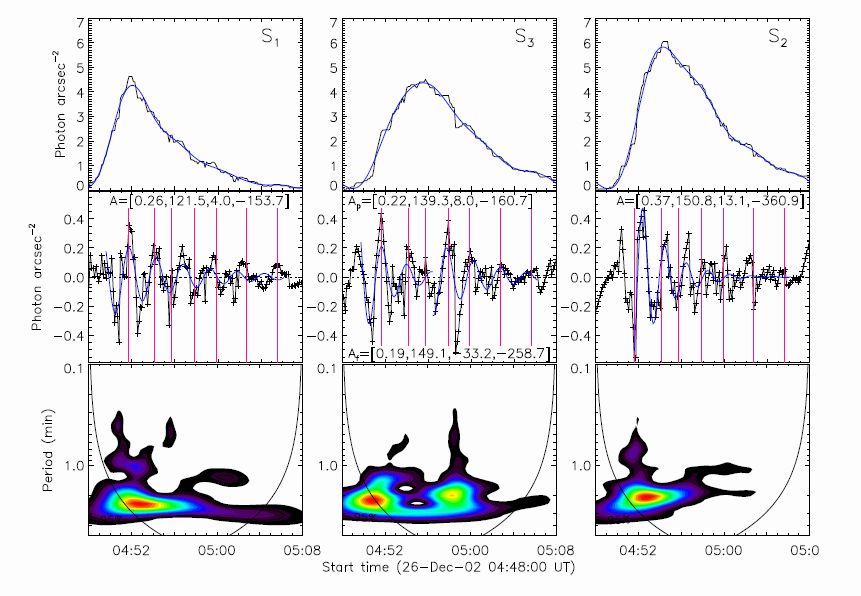Quasi-periodic oscillations in soft X-rays (SXR) produced by solar flares are not well known due to the instrument and temporal limitations. Here, we explore the quasi-periodic oscillations of SXR at 3 – 6 keV in a solar flare observedby the Reuven Ramaty High Energy Solar Spectroscopic Imager (RHESSI) on 26 December 2002. With its full-disk solar imaging possibility, wide energy coverage (3 – 17 000 keV), and high sensitivity, RHESSI provides unprecedented capabilities for investigating quasi-periodic oscillations at 3 – 6 keV X-ray emissions with a high temporal resolution. The flare studied here was a B8.1 class event and showed three X-ray sources (S1, S2, and S3) at 3 – 6 keV and two sources (S1 and S2) at 12 – 25 keV. The light curves of the total fluxes and each source display a two-minute oscillation at 3 – 6 keV, but not in the energy bands above 8 keV.We used the Fourier method to decompose each source light curve into rapidly varying and slowly varying components. The rapidly varying components show seven individual peaks which are well fitted with a sine function. The results show that three sources display damped quasi-periodic oscillations with a similar two-minute period. Meanwhile, source S1 oscillates with the samephase as S3, but is almost in anti-phase with S2. We also found that the source motions along the flare loop related to the oscillation peaks, indicating be an observational constraint on the emission mechanism at SXR (3 – 6 keV). The work by NING Zongjun has been accepted to be published in the Solar Physics, Vol. 289 No. 4 pp.1193-1202 ,2014 please see (http://link.springer.com/article/10.1007/s11207-013-0405-6).

By with NING Zongjun Top: temporal evolution of the S1, S2, and S3 integration fluxes (black) with an eight-second temporal resolution; blue lines represent the slowly varying components. Middle: temporal evolution of the rapidly varying components; blue lines are sine-function fitting curves. The vertical pink lines indicate the seven peaks on the light curves. Bottom: wavelet spectra of the rapidly varying components to show two-period period.. |
